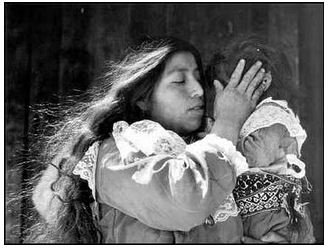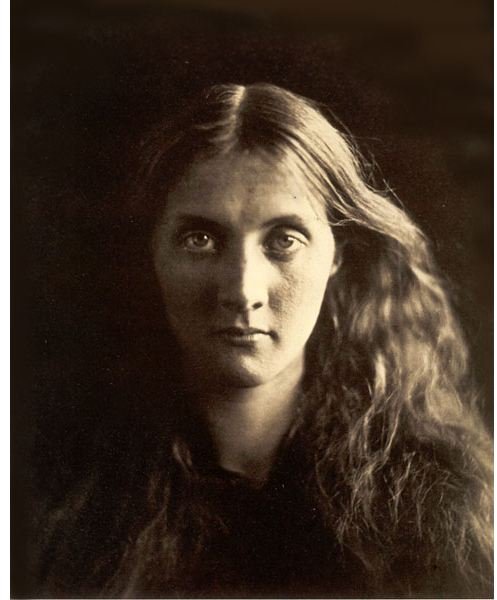Famous Women Photographers: Biographies of Julia Margaret Cameron, Dorothea Lange & More
Throughout history, women have set new precedents and standards for the art of photography. Below you will find a list of famous women photographers who have made an impact in their own way in their field. Some started early, knowing that photography was their passion, while others discovered only later in life their skill and artistic ability.
Julia Margaret Cameron (1815-1885)
Julia Margaret Cameron was best known for her soft focus portraits as well as her historically themed illustrative photographs, many of which could be mistaken for oil paintings, and for her portraits of historical figures such as Charles Darwin, Lord Alfred Tennyson, and Julia Prinsep Jackson, most of whom she was also good friends with. While her photographs were not popular during her lifetime, they became quite popular later on as several biographies were written about her life, including one written by Julia Prinsep Jackson, the mother of author Virginia Woolf. Her popularity was truly ignited when, in 1975, Imogen Cunningham said, “I’d like to see portrait photography go right back to Julia Margaret Cameron. I don’t think there’s anyone better.”
Julia Margaret Cameron, unlike many famous women photographers, did not discover her love of photography until later in life, at the age of 48, when she received a camera as a gift. She had been born in Calcutta, India, in 1815, daughter of East India Trading Company’s James Pattle. She was educated in France, but returned once again to Calcutta, where she married Charles Hay Cameron in 1838. Ten years after their marriage, Julia Margaret Cameron and her husband moved to England after her husband’s retirement. In 1875, they moved to what is now Sri Lanka and in 1979 she passed away after catching a bad chill.
Julia Prinsep Jackson, by Julia Margaret Cameron
Dorothea Lange (1895-1965
Dorothea Lange was most famous for her works during the Great Depression and later during World War II. She humanized the struggles of the poor, the homeless, farmers and sharecroppers, migrant workers, and those forced to relocate during times of strife. She worked for the Resettlement Act (RA), the Farm Security Administration (FSA), and the War Relocation Authority (WRA). Due to the controversial ad emotional images she depicted in her photographs, many of her works were impounded at the time. They are now available in the National Archives, The Bancroft Library of the University of California, Berkeley, and the Art Institute of Chicago. She was also introduced into the California Hall of Fame in the California Museum of History, Women, and the Arts in 2008.
Dorothea Lange was not gifted with an easy life. She was born in new Jersey in 1895 and at the young age of 7, she developed polio. When asked later on about her disability, she replied, “It formed me, guided me, instructed me, helped me and humiliated me. I’ve never gotten over it, and I am aware of the force and power of it.” She was educated and apprenticed in New York City, New York, and she moved to San Francisco in 1918. She lived the rest of her life in Berkeley. She was married twice, once to Maynard Dixon, from 1920 until 1935, and once to Paul Schuster Taylor, from 1935 until the end of her life. She passed away in 1965, at the age of 70, due to gastric problems and residual polio effects.
Migrant Mother, by Dorothea Lange
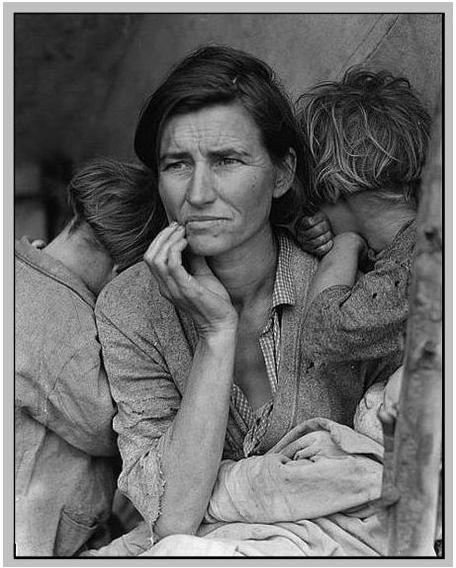
Margaret Bourke-White (1904-1971)
Some might might suggest that Margaret Bourke-White deserves to be listed first in any list of famous women photographers as she set not one, not two, but three important precedents. She is known for being the first woman war correspondent photographer, the first woman photographer allowed in combat zones, and also the first photographer of her time allowed to photograph the intimate details of the Soviet industry. Lesser known, but equally important, is her work during the India-Pakistan partition during the 1940s. Her fame doesn’t stop there, either, as she worked in architectural and commercial photography as well. Her photographs are now displayed in the Brooklyn Museum, the Cleveland Museum of Art, the Museum of Modern Art in New York, the Syracuse University’s Bird Library Special Collections, and in the Library of Congress.
Margaret Bourke-White was born in the Bronx in 1904 and her father, Joseph White was an amateur photograph who exposed her to the art of photography at a young age. She was educated at the University of Michigan and at Cornell University, graduating from that latter in 1927. She was married to Everett Chapman, a marriage that lasted only a short time, and after her divorce, she moved to Cleaveland, where her career as a photographer began in full. In 1953, she was diagnosed with Parkinson’s Disease and she passed away in 1971, at the age of 67, in Stanford, Connecticut as a result of her disease.
Prisoners at Buchenwald, by Margaret Bourke-White
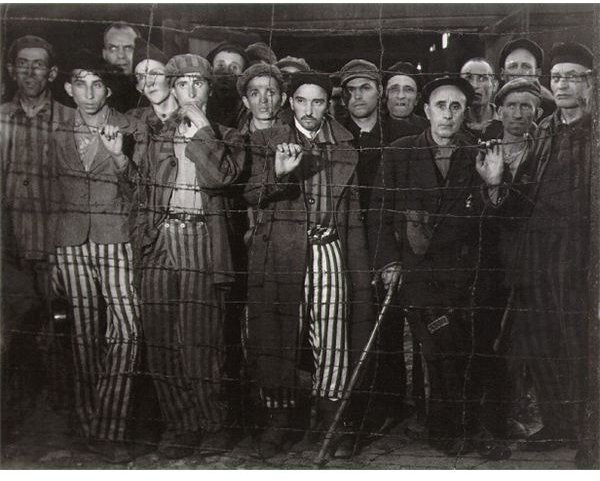
Diane Arbus (1923-1971)
Although Diane Arbus was afraid of being known as ’the photographer of freaks’, she undoubtedly was best known for her work with unusual people, including the physically and mentally handicapped, dwarfs, giants, transvestites, and circus performers. It is her skill with soft lighting and her specialization with squared black and white photographs, however, that really drew the attention of people. She was also the first woman photographer to have her works displayed in Venice, Italy’s Venice Biennale. The 2006 move ‘Fur’ depicts a fictional version of Diane Arbus’ life.
Diane Arbus was born in New York City, New York, in 1923, to wealthy parents who both possessed an interest in photography and whom were published in Glamour and Vogue magazines. Diane Arbus worked for Esquire, Harper’s Bazaar, and the Sunday Times Magazine and later taught photography in both New Jersey and New York. Sadly, she took her own life in 1971, at the young age of 48, after years of suffering from episodes of depression.
Child with a toy hand grenade in Central Park, N.Y.C., by Diane Arbus
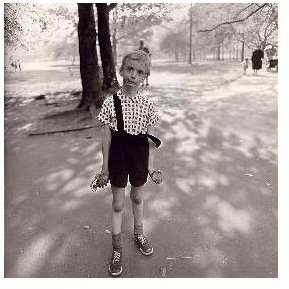
Annie Leibovitz (1949-)
Annie Leibovitz is one of the most famous women photographers of out time, known best for her work published by Rolling Stone magazine, as well as her work for Vanity Fair magazine and the New York Times. She began taking black and white photographs but soon developed not only a taste for color photographs, but a flair for color and intimacy. She photographed many celebrities in revealing poses, capturing a human aspect that is lacking in many Hollywood photographs. She is most well known for being the last person to photography John Lennon, along with Yoko Ono, just hours before he was killed. She also took pictures of Queen Elizabeth II for the Walt Disney Company, Demi Moore for Rolling Stone magazine, and many other famous photographs.
Annie Leibovitz was born in Waterbury, Connecticut, in 1949, the daughter of an US Air Force Lieutenant. She travelled much at a young age, due to her father’s assignments, and it was during a visit to the Philippines that she discovered her love of photography. She later studied painting at San Francisco University, but soon her love of photography overwhelmed her love of painting. She worked for Rolling Stone magazine from 1970 until 1983 and developed a reputation as well a small fortune in royalties. Due to financial troubles, she is currently struggling to retain the rights to her photographs, which where used as collateral in a 2009 loan for 15 million dollars.
John Lennon and Yoko Ono, Rolling Stone magazine, 1980, by Annie Leibovitz
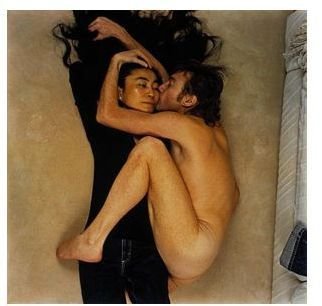
Jodi Cobb
Jodi Cobb is a former international photographer for National Geographic magazine and is most famous for exploring topics such as slavery in the modern age. She has visited over 50 countries around the world and was one of the first photographers to enter China when it opened its borders. She specializes in women’s issues, having taken pictures of geisha’s, women in Saudi Arabia, and women in Brazil. She has contributed her photography to many books, including the ‘Day in the Life’ series, ‘Vietnam Veterans Memorial: The Wall, Here Be Dragons’, and ‘The Way Home: Ending Homelessness in America’.
Jodi Cobb grew up in Iran and was able to travel a great deal when she was young. She studied at the University of Missouri and at Corcoran College of Art and Design in Washington, D.C. She currently teaches workshops around the world and has been featured on television programs such as PBS’ ‘On Assignment’ and NBC’s ‘Today Show’.
A Geisha in Shadow, by Jodi Cobb
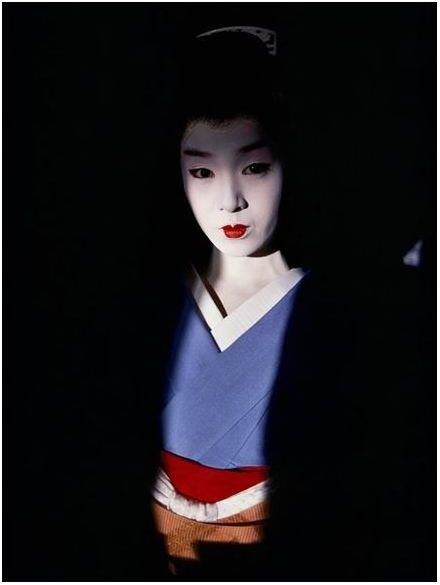
Susan Meiselas
Susan Meiselas is best known for her work documenting human rights issues in Latin America, especially her work in El Salvador and Nicaragua. She focuses on human issues, rights, and freedom and has published numerous books on the subject. She also photographs issues in her home country, the United States, that deal with stripers and prostitution, revealing aspects that are both revealing and controversial.
She was educated at Sarah Lawrence College and Harvard University, has published numerous books, and has worked largely as a freelance photographer. She has had exhibits in Paris, Madrid, Amsterdam, London, Los Angeles, Chicago and New York, and has received many awards for her work. She currently works for Magnum Photos, operating out of New York, London, Paris, and Tokyo.
Lena on the Bally Box, by Susan Meiselas
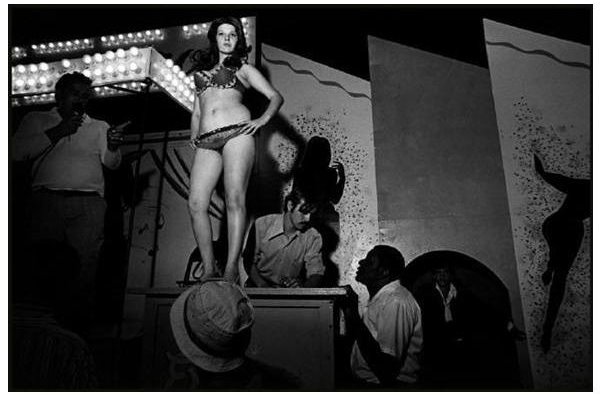
Mariana Yampolsky
Although born in the United States, Mariana Yampolsky is one of the most famous women photographers to photograph the people of Mexico. She is known for combining dramatic landscapes with imagines of people, creating very powerful, very emotional results. She is as dedicated to human rights as she is to her work, sharing her experiences as well as those she comes in contact with.
Born in the United States and educated at the University of Chicago, Mariana Yampolsky soon turned her attention to Mexico, where she has lived and worked since 1944. She was exposed to social ideas and thoughts of freedom as a young child and has never left those behind. She has published many works and has been displayed in institutes in the Netherlands, England, and Mexico. She also gave many lectures in the United States, Mexico, and England about Mexican culture and social issues. She passed away in 2002, leaving her husband, Arjeh van der Sluis, behind, along with many great works.
Caricia, San Simón de la Laguna, Estado de México, b Mariana Yampolsky
